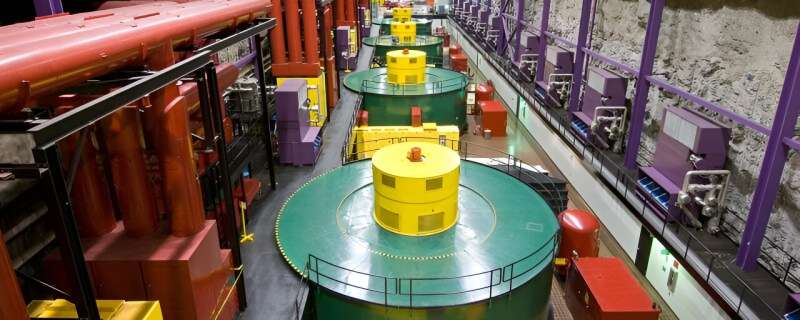This article has been reviewed according to Science X's editorial process and policies. Editors have highlighted the following attributes while ensuring the content's credibility:
fact-checked
trusted source
proofread
New method monitors grid stability with hydropower project signals

Scientists at Oak Ridge National Laboratory and the University of Tennessee, Knoxville, have developed an algorithm to predict electric grid stability using signals from pumped storage hydropower projects. The method provides critical situational awareness as the grid increasingly shifts to intermittent renewable power.
Hydropower is a renewable energy source directly connected to the grid, providing inertia as water spins large turbines. Pumped storage hydropower, or PSH, draws electricity from the grid to pump water from a lower to an upper reservoir in times of low power demand to create an energy storage bank. In times of high demand, the projects generate electricity as water is routed back to the lower reservoir through the turbines.
When the pumps shut down, they almost always stop at a fixed power level, said Yilu Liu, lead for the project and UT-ORNL Governor's Chair for power grids. "That's a very defined signal on the grid that can help us calculate overall inertia," Liu said.
Inertia is the kinetic energy provided by the spinning parts of large power plants that maintain the grid's balance between the push of power supply and the pull of power demand. Generation sources such as solar and wind currently provide a minimal amount of inertia since they are connected to the grid using inverters that convert the direct current power generated by renewables to the alternating current power used to transmit electricity over long distances.
The result is that grids reliant on inverter-connected renewable energy have less tolerance to abrupt change such as storm damage or unusual demand peaks.
Liu and colleagues created a new algorithm that captures the PSH signal and uses it along with information gathered from unique, low-cost grid sensors previously deployed across the country. That sensing and measurement system, FNET/GridEye, was developed by ORNL and UTK researchers to monitor the grid across a wide area. Together, the PSH signal and sensor data produce a real-time, highly accurate estimation of grid inertia.
The researchers created a visualization interface that makes it easy for grid operators to monitor inertia using the algorithm and better prepare for potential grid instability. The new method was validated with the help of utilities and power regulating authorities in the western and eastern United States where pumped storage hydropower is most prevalent.
"What we're providing will become more and more important for grid situational awareness as the system grows increasingly reliant on renewables," Liu said. The visualization tool is being demonstrated to utilities and grid coordinating authorities such as the North American Electric Reliability Corporation.
"Through this project we can demonstrate how important inertia is, and how pumped storage hydro can contribute to it, especially as we are looking at more intermittent renewable energy sources added to the grid," said Shih-Chieh Kao, manager of the Water Power Program at ORNL.


















